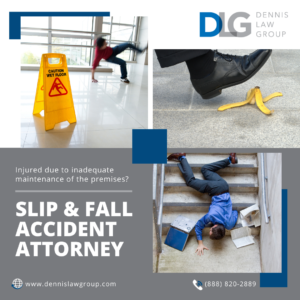Slip and fall accidents are more common than people think. More than 800,000 Californians are injured in a slip and fall each year and according to the Centers for Disease Control and Prevention (CDC), 1 out of every 5 falls across the country results in a serious injury.
A slip and fall can result serious injury and, in the most tragic cases, death. Some of the most common slip and fall injuries include:
- Head injuries and traumatic brain injuries
- Spinal cord injuries, such as paralysis
- Hip fractures
- Back and neck injuries
- Wrist, arm, and ankle injuries
This list is not exhaustive. If you or a loved one has been injured in a slip and fall that was the result of another person’s or business’s negligence, contact us to discuss your legal rights and potential for financial recovery.
What financial compensation is available in California slip and fall cases?
If you are filing a personal injury claim in California, the following types of financial compensation are available to you: Economic and non-economic damages. Economic damages include medical costs, income, and property loss. Non-economic damages compensate the victim for pain and suffering and emotional distress.
This means you can potentially recover the following:
- Medical treatment – past, present and future medical bills relating to your personal injury
- Income – lost wages from time you were forced to take off work
- Property loss – any damage to personal property
- Emotional distress – the fear, anxiety, post-traumatic stress disorder, or other psychological conditions that arise following a trauma or injury
In some cases, punitive damages are available to the slip and fall victim. If the defendant’s actions were so egregious or careless, the court might decide that the defendant needs to be punished. In that situation, the court awards punitive damages to the accident victim. These damages are intended to set an example.
California law requires that the court consider 3 factors when evaluating whether punitive damages should be awarded:
- Reprehensibility of the defendant’s conduct
- The amount of compensatory damages awarded or actual harm suffered by the plaintiff
- The defendant’s financial situation
Slip and fall statute of limitations
As is generally the case with California personal injury accident, the victim has a certain amount of time to file a lawsuit. This is known as the statute of limitations, or SOL. Under California Code of Civil Procedure section 3351, a slip and fall accident victim typically has 2 years from the date of injury to file a personal injury lawsuit. There are exceptions to this rule and an experienced injury attorney will be able to discuss them with you.
For a free, no obligation consultation about your slip and fall accident case, contact the experienced attorneys at Dennis Law Group today.

